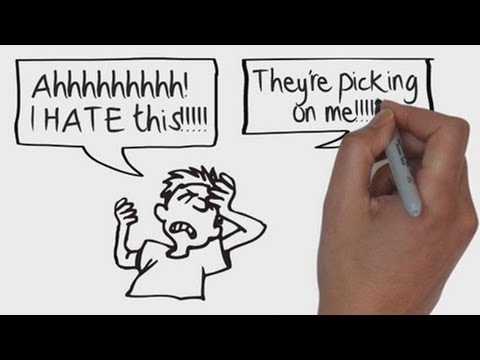
The Interactive Autism Network (IAN), http://www.ianproject.org, the nation’s largest online autism research initiative and a project of the Kennedy Krieger Institute, reports preliminary results of the first national survey to examine the impact of bullying on children with autism spectrum disorders (ASD). The results show that 63 percent of children with ASD have been bullied at some point in their lives. These children, who are sometimes intentionally “triggered” into meltdowns or aggressive outbursts by peers, are bullied three times more frequently than their siblings who do not have ASD.
“These survey results show the urgent need to increase awareness, influence school policies and provide families and children with effective strategies for dealing with bullying,” said Dr. Paul Law, director of the IAN Project at the Kennedy Krieger Institute. “We hope that this research will aid efforts to combat bullying by helping parents, policymakers and educators understand the extent of this problem in the autism community and be prepared to intervene.” (For more insights on the survey results, visit this online discussion with Dr. Connie Anderson, IAN’s community scientific liaison: http://www.kennedykrieger.org/overview/news/research-discussion-interactive-autism-network-ian-community-scientific-liaison-dr-connie-anderson.)
Nearly 1,200 parents of children with ASD completed the survey. Findings show that these children (ages 6 to 15 years) are especially vulnerable to bullying, and point to a number of risk factors.
Where and When Bullying Occurs
- While bullying occurred at every grade level, between 5th and 8th grades appeared to be the worst, with 42 to 49 percent of children with ASD in those grades currently bullied.
- Children with ASD attending regular public schools are bullied at a rate of nearly 50 percent more than children in private school or special education settings.
- Types of bullying most often reported include being teased, picked on or made fun of (73 percent); being ignored or left out of things on purpose (51 percent); being called bad names (47 percent); and being pushed, shoved, hit, slapped or kicked (nearly 30 percent).
Potential Risk Factors
- While parents reported that 39 percent of children with ASD were bullied in the month prior to the survey, only 12 percent of their typically developing siblings, ages 6 to 15, were bullied in the same timeframe, indicating children with ASD are bullied at a rate more than three times higher than their unaffected siblings.
- Across ASD diagnoses, 61 percent of children with Asperger’s syndrome experienced bullying, a rate nearly double that of children with other diagnoses on the autism spectrum. This may be due in part to different school placement across the groups.
- Behaviors and traits associated with becoming a target of bullying include clumsiness, poor hygiene, rigid rule keeping, talking obsessively about a favorite topic, frequent meltdowns and inflexibility.
- Of those children who want to interact with others, but have a hard time making friends, 57 percent are bullied, compared to only 25 percent of children who prefer to play alone and 34 percent of children who will play, but only if approached.
Experience as Bullies and “Bully-Victims”
While children with ASD are frequently victims, they may also behave as bullies, or at least be viewed as a bully.
- 46 percent of children with ASD have been a victim of bullying only, while 17 percent of children with ASD have been a bully-victim, defined as a child who has been bullied and also bullied others.
- 52 percent of parents indicated that peers taunted their child to intentionally trigger a meltdown or aggressive outburst.
Researchers believe that the deficits in social understanding common in children with ASD may lead to bullying behavior by the child that is different than that displayed by typically developing children. For example, an honest but socially unacceptable remark such as, “You’re fat,” by the child with ASD may be viewed by others as purposely cruel when it is not. Likewise, a child with ASD who is accidentally bumped into might misinterpret this as intentional, and lash out in a way that looks like bullying.
“Children with ASD are already vulnerable. To experience teasing, taunts, ostracism or other forms of spite may make a child who was already struggling to cope become completely unable to function,” said Dr. Law. “The issue is complex and we plan to carefully analyze the data and publish peer-reviewed findings that will serve to advance policy and care for individuals with ASD.”